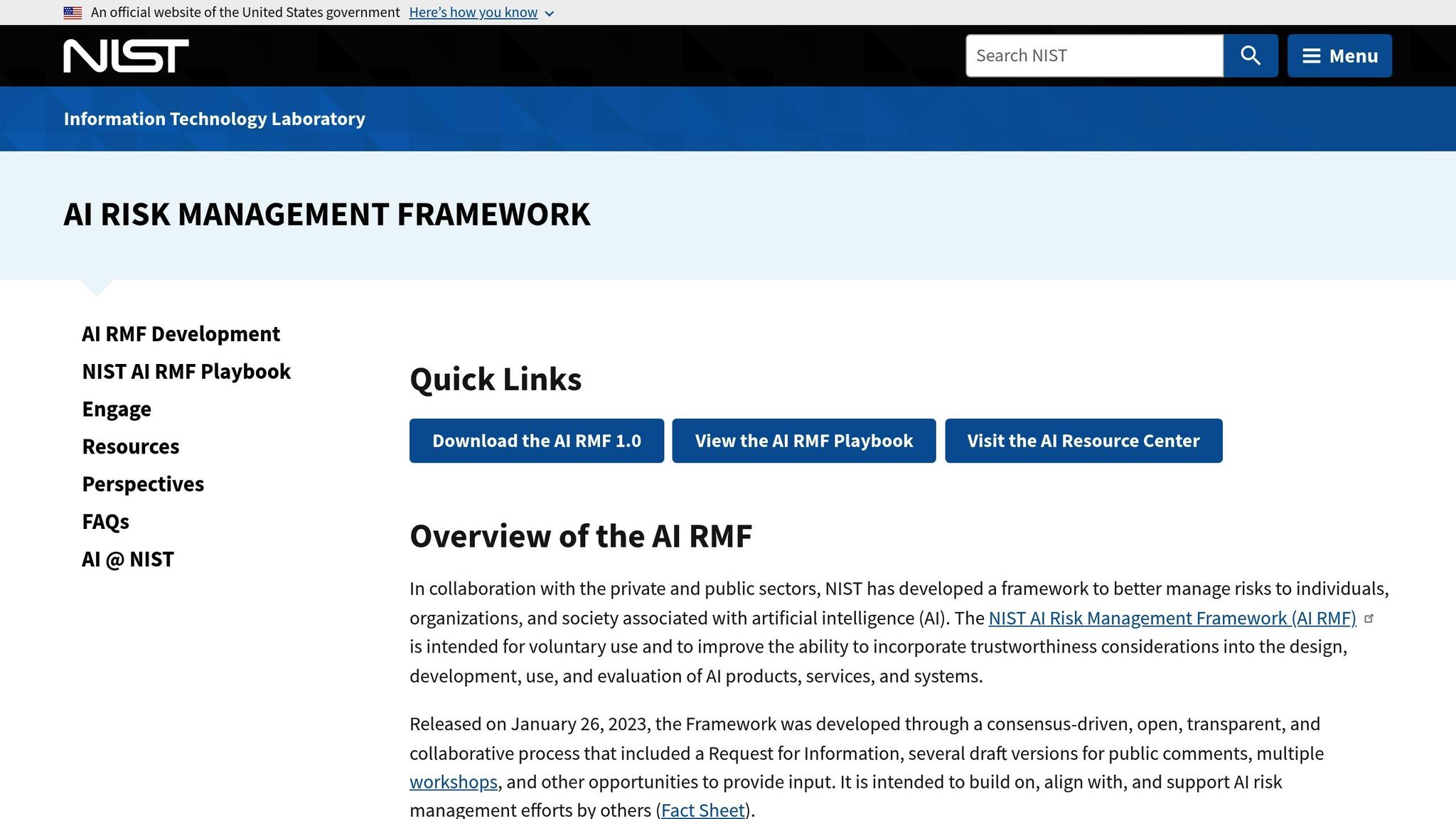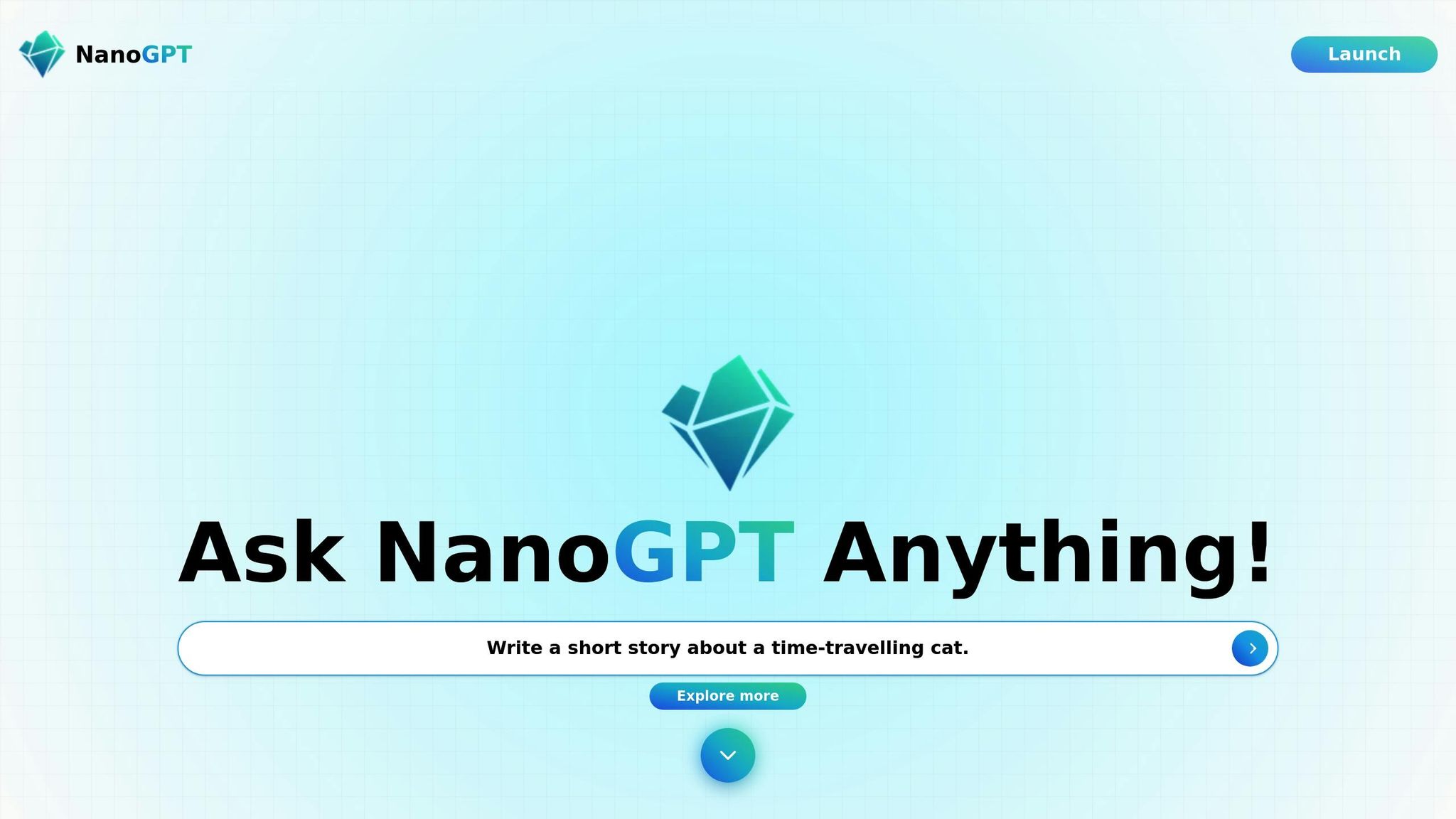AI Explainability Certification Standards
May 6, 2025
AI explainability certification ensures AI systems are transparent, accountable, and ethical. It’s crucial for industries like healthcare, finance, and transportation to meet regulations, reduce risks, and build trust. Here's what you need to know:
- Why It Matters: Certification helps organizations comply with U.S. regulations, such as HIPAA in healthcare and transparency rules in finance and transportation.
- Key Frameworks: Standards like the NIST AI Risk Management Framework guide organizations in governance, risk evaluation, and documentation.
- Certification Essentials:
- Challenges: Complex models, high documentation demands, and costs make certification difficult.
- Future Trends: Standards are evolving, with updates like ISO/IEC 42001:2023 and sector-specific rules.
Platforms like NanoGPT already align with these standards by ensuring transparency, privacy, and user-friendly practices.
AI explainability certification is becoming essential for ethical AI deployment and regulatory compliance.
AI Transparency, Explainability, and Accountability (ISO 42001)
Main Standards for AI Explainability
In the U.S., frameworks and regulations focus on ensuring AI systems are transparent, accountable, and compliant. Below, we break down key frameworks and sector-specific rules that shape AI certification.
NIST AI Risk Management Framework

The NIST AI Risk Management Framework emphasizes structured governance, strong technical safeguards, regular risk evaluations, and thorough documentation. These elements aim to support clear and transparent AI decision-making processes.
Industry-Specific Rules
Different U.S. industries have their own guidelines for AI explainability, tailored to meet specific regulatory and operational demands:
-
Healthcare Sector
Healthcare providers must adhere to HIPAA by implementing AI systems that offer clear explanations while protecting patient privacy. -
Financial Services
Financial institutions are required to document algorithmic decisions, risk models, and automated trading processes to maintain transparency. -
Transportation
In the transportation sector, especially for autonomous systems, the U.S. Department of Transportation mandates fully documented and explainable AI decisions to prioritize safety and accountability.
Required Elements for Certification
Achieving certification involves implementing solid technical solutions, providing clear user explanations, and maintaining detailed documentation.
Technical Requirements
The backbone of AI explainability certification is ensuring transparency in how AI systems make decisions. Two widely recognized methods help achieve this:
SHAP (SHapley Additive exPlanations)
- Assigns importance to different features
- Calculates how each input contributes to predictions
- Supports both global and local model analysis
LIME (Local Interpretable Model-agnostic Explanations)
- Focuses on local model behavior approximation
- Produces predictions in an easy-to-understand format
- Allows for visualizing decision boundaries
To meet certification standards, these methods must be fully documented and validated.
Clear User Explanations
Technical solutions alone aren't enough - users need explanations they can understand. Breaking down complex AI processes into simple terms is crucial for different user groups.
| User Type | Explanation Needs | Preferred Format |
|---|---|---|
| Technical Users | Details on algorithms, architecture, and parameters | Technical documentation, API references |
| Business Users | Process workflows, decision criteria, business logic | Flowcharts, decision trees, case studies |
| End Users | Straightforward explanations of decision impacts | Plain language summaries, visual guides |
Required Documentation
Thorough documentation is a critical part of certification, ensuring transparency and accountability. Key documentation areas include:
1. Model Development Records
- Information on training data sources and preprocessing steps
- Specifications for the model's architecture
- Performance metrics and validation results
2. Operational Documentation
- Deployment procedures for the system
- Protocols for monitoring and regular maintenance
- Plans for handling incidents or unexpected issues
3. Compliance Records
- Audit trails to track system changes
- Version control documentation
- Risk assessments and mitigation strategies
- Logs of user feedback and complaints
NanoGPT's practices, such as storing data locally and maintaining transparent processing logs, align with these requirements and prepare for future regulatory changes.
sbb-itb-903b5f2
Steps to Get Certified
Follow a structured approach to certify your AI explainability.
Pre-Certification Review
Start by evaluating key aspects of your system, including:
- System documentation: Model architecture, data workflows, decision logic, and user interface.
- Compliance: Current explainability measures, documentation gaps, risk management protocols, and feedback mechanisms.
Run a gap analysis to identify areas needing improvement.
Certification Process
- Roll out necessary tools and refine processes.
- Complete all required documentation, such as system descriptions, risk assessments, and validation reports.
- Conduct an internal audit to ensure compliance.
Once your internal processes are ready, decide on the certification path.
Internal vs. External Certification
An internal review offers more flexibility and can reduce costs, while an external audit provides stronger market credibility. Consider your goals and resources to make an informed choice.
Current Issues and Future Outlook
As AI explainability certifications gain traction, organizations face new challenges and evolving standards that will shape the future of this field.
Common Certification Problems
For many organizations, obtaining AI explainability certification is no small feat. Complex models and the need for clear documentation create significant hurdles. Technical teams often find themselves walking a fine line between ensuring strong model performance and making those models understandable.
Here are some of the most pressing challenges:
- Documentation Requirements: Producing clear and detailed documentation that meets certification standards while also being understandable for non-technical audiences is tough.
- Model Complexity: Advanced systems like deep learning models and neural networks are notoriously difficult to explain in plain terms.
- Implementation Costs: Meeting certification standards often requires heavy investment in tools, training, and hiring skilled experts.
New Standards Development
As AI technology continues to evolve, so do the standards that govern its transparency. For example, updates to the ISO/IEC 42001:2023 guidelines are being made to address the latest technologies and use cases.
Additionally, specific industries are developing their own standards to tackle unique challenges:
- Healthcare: New rules prioritize protecting patient data and providing clear explanations for clinical decisions.
- Financial Services: Guidelines now emphasize transparency in loan approvals and automated risk assessments.
- Government: Public sector procurement standards are emerging for AI systems used in public services.
These efforts are paving the way for new solutions, including NanoGPT's innovative strategies.
NanoGPT's Approach

NanoGPT has taken a proactive stance on AI explainability by designing a platform that addresses key challenges like model complexity and documentation. Their work stands out as an example of how to meet certification demands while keeping things user-friendly.
Here’s what NanoGPT brings to the table:
- Local Data Storage: All user data stays on the user’s device, ensuring privacy and transparency.
- Model Selection Transparency: Users are informed about which AI model is being used for each task.
- Pay-as-you-go Clarity: The platform provides clear visibility into usage and costs, with a minimum charge of $0.10 per interaction.
NanoGPT’s approach emphasizes clarity and accessibility, providing users with a better understanding of how AI models operate. This aligns closely with emerging certification standards, offering a practical example of how advanced AI systems can maintain transparency without sacrificing usability.
Summary
AI explainability certification standards play a key role in building trust and accountability in artificial intelligence systems. These frameworks provide guidelines to help organizations showcase their commitment to transparency and ethical practices.
The certification process focuses on three main areas:
Compliance and Documentation
Organizations need to clearly outline how their AI models work and how data is processed. This helps ensure systems meet transparency guidelines and makes AI operations easier to understand.
Ethics and Accountability
Standards require thorough testing to identify and address potential biases in AI models. By documenting fairness and reliability, organizations can strengthen user confidence in their systems.
User Trust and Understanding
Certification improves how users perceive and interact with AI. For example, NanoGPT offers transparent, pay-per-prompt access to AI models, combined with local data storage. This approach highlights the importance of openness and trust in AI systems.
As these standards evolve, platforms like NanoGPT are setting examples for transparent and accountable AI. Industry-specific requirements are adding new dimensions of responsibility, ensuring AI systems remain clear and aligned with user expectations.
FAQs
What are the key benefits of AI explainability certification for businesses in regulated industries?
AI explainability certification offers several important advantages for organizations operating in regulated industries. First, it helps businesses demonstrate compliance with legal and ethical standards, ensuring their AI systems align with industry-specific regulations. This can reduce the risk of penalties and enhance trust among stakeholders.
Second, certification fosters transparency by making AI decision-making processes more understandable for regulators, customers, and employees. This transparency can improve user confidence and make it easier to address concerns about fairness, bias, or accountability.
Finally, obtaining certification can provide a competitive edge by showcasing a commitment to responsible AI practices. This not only strengthens an organization's reputation but also positions it as a leader in adopting ethical AI solutions.
What roles do SHAP and LIME play in AI explainability, and why are they important for certification?
SHAP (SHapley Additive exPlanations) and LIME (Local Interpretable Model-agnostic Explanations) are widely used tools for enhancing AI explainability. They help break down complex machine learning models by providing clear, interpretable insights into how these models make decisions.
SHAP assigns a contribution value to each input feature, explaining its impact on a model's prediction. LIME, on the other hand, creates simplified, interpretable models for specific predictions, making it easier to understand localized decision-making. Both methods are critical for building trust in AI systems and ensuring compliance with certification standards that demand transparency and accountability in AI applications.
What are the main challenges organizations face in meeting AI explainability certification standards, and how can they address them?
Organizations face several challenges when working to meet AI explainability certification standards. These include navigating complex and evolving global regulations, ensuring transparency in AI models without compromising proprietary information, and adapting existing systems to comply with new frameworks. Additionally, achieving explainability often requires balancing technical accuracy with user-friendly interpretations, which can be especially difficult for highly complex or opaque AI models.
To overcome these challenges, organizations can adopt strategies such as:
- Staying informed: Regularly monitoring updates to both global and regional certification standards.
- Investing in tools: Leveraging AI tools and platforms that prioritize explainability and compliance.
- Training teams: Ensuring staff are knowledgeable about explainability requirements and best practices.
By proactively addressing these areas, organizations can create more transparent AI systems that align with certification standards while building trust with users and stakeholders.
